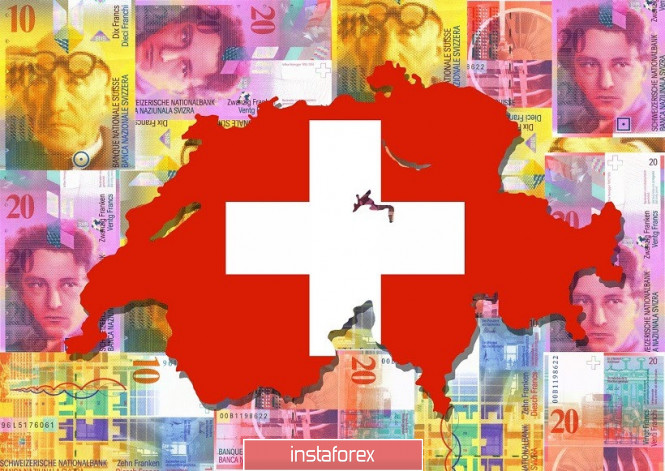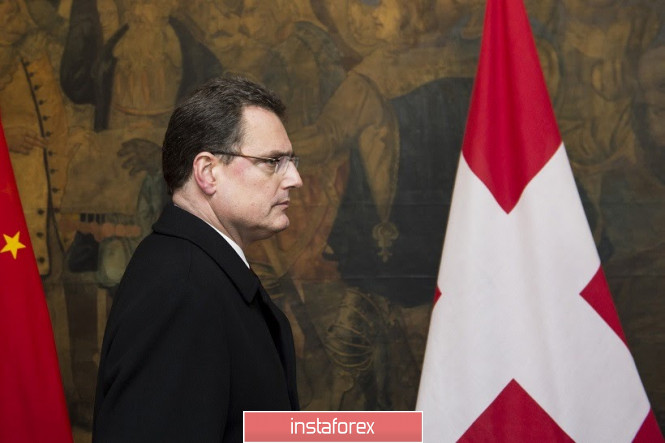The focus of forex traders yesterday was unexpectedly the Swiss currency. The franc significantly strengthened against a basket of major currencies, and paired with the euro reached an almost three-year high. As a rule, the Swiss currency is quite quiet and phlegmatic - especially in the cross EUR/CHF. Therefore, yesterday's price impulse attracted the interest of market participants. In addition to the reasons for this impulse, another question is of interest - is this price dynamics the beginning of the downward trend, or are we only dealing with a temporary phenomenon? The cross has already shown a slight correction during the Asian session on Wednesday, which may indicate the likelihood of a larger scale price pullback. But if we consider a longer period, the situation here does not look so clear - especially when you consider the reasons why the franc began to rise in price.

As you know, the Swiss currency has the status of a defensive instrument, adding a headache to the central bank of Switzerland, which is trying to reduce the attractiveness (and therefore demand) for the "chief". SNB introduced negative rates a few years ago and conducts currency interventions with some regularity. Despite a certain devaluation of the franc, the Swiss regulator still considers it overvalued. SNB Head Thomas Jordan never tires of reiterating the thesis that the negative rate is still relevant and therefore will be valid for a long time. He also assures investors that the central bank will continue to conduct foreign exchange interventions, while maintaining an ultra-soft monetary policy.
In general, after the historic decision not to keep the Swiss currency at the lowest level of 1.20 (against the euro), the meetings of the Swiss central bank do not cause much interest. The market simply takes note of the comments of the head of the SNB on the current situation in the country's economy, not expecting any additional real action. Indeed, the regulator has already managed to use many levers of influence. Not only are interest rates already in the negative zone, the list of beneficiaries exempted from negative rates has also been significantly reduced.
However, the United States is still concerned about the actions of the SNB. In a semi-annual report published yesterday, the US Treasury Department accused the Swiss monetary authorities of significantly increasing purchases of foreign currency - according to them, the corresponding volumes began to sharply grow from the middle of last year. Apparently, the Swiss regulator thus began to prepare for the "hard" Brexit, the probability of which began to increase just in the summer of 2019. However, in previous years, the Swiss central bank carried out similar actions, trying to weaken the demand for the national currency. That is why the US Treasury Department has added Switzerland to the list of currency manipulators. The above report states that Washington is worried about the foreign exchange practices of the SNB, thus putting the Swiss central bank on a par with the German Bundesbank, the Bank of Japan and the South Korean central bank. Also, the US Ministry of Finance indicated that SNB maintains the "lowest" interest rates in the world.
It is worth noting that the very fact that Washington rebuked Bern for manipulating the course does not have any immediate consequences. Nevertheless, the franc reacted violently to this news, having strengthened, in particular, against the euro to 30-month highs. In this case, in my opinion, we are dealing with the so-called "crowd psychology." According to many traders, SNB will now review its policy - at least in terms of the frequency of use of foreign exchange interventions. These expectations increased demand for the Swiss currency, although the Swiss central bank itself, firstly, rejected the above allegations, and secondly, announced that it would not change anything in its policy. The SNB recalled that the regulator's actions are aimed at ensuring price stability while taking economic changes into account, therefore it intends to continue to "follow this mandate".

In other words, the hopes of many traders are illusory. If the franc will continue to rise in price against the euro, the Swiss regulator will simply be forced to intervene, without any regard to the opinion of the US Ministry of Finance. Moreover, the SNB has officially voiced a similar position. Thus, the EUR/CHF cross-pair can by inertia reach the bottom of the 7th figure, however, further development of the downward trend seems an unlikely scenario.
From a technical point of view, the pair is currently under significant pressure, and on all the higher timeframes. On charts H4, D1, W1 and MN, the pair is on the lower line of the Bollinger Bands indicator, which also indicates the priority of the downward movement. The pair shows a pronounced bearish trend, which is confirmed by the main trend indicators - Bollinger Bands and Ichimoku, which formed the strongest bearish Parade of Lines signal on all the above timeframes - all indicator lines are above the price chart, thereby demonstrating pressure on the pair. To determine the main goal of the downward movement, let's move on to the monthly timeframe: here we focus on the lower line of Bollinger Bands - this is the price of 1.0705. The next level of support is much lower (1.0490 - the lower boundary of the Kumo cloud on MN) - the Swiss regulator will certainly take a response if the bears try to conquer this price target.
The material has been provided by InstaForex Company - www.instaforex.com